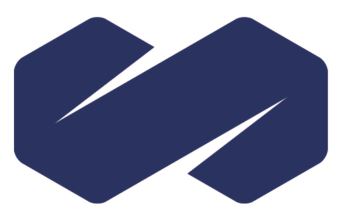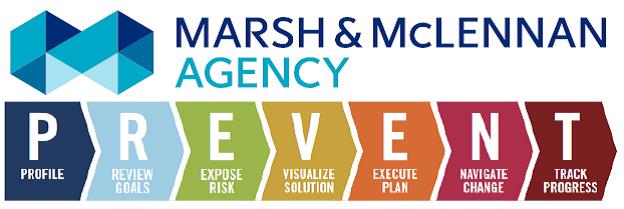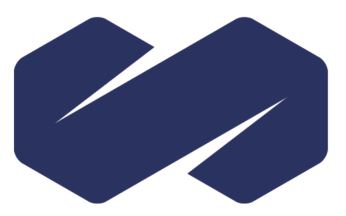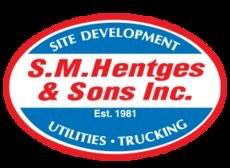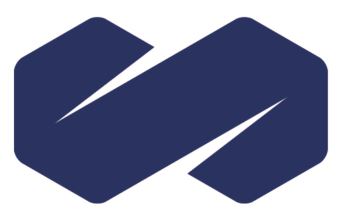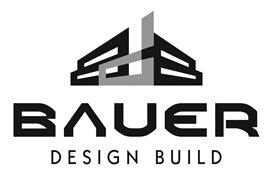Information
-
Project Site / Name
-
Location
-
General Contractor
-
Project Superintendent
-
Project Manager
-
Conducted on
-
Conducted by
-
Marsh & McLennan Agency (MMA) provides assistance to employers in evaluating workplace safety exposures and/or conducting surveys, which may not reveal every hazard, exposure and/or violation of safety practices. Inspections conducted by MMA do not result in any guarantee that the workplace, operations, machinery, appliances or equipment are safe or in compliance with applicable regulations. Appropriate protection is ultimately the responsibility of the employer. This report may contain confidential information.
-
The services performed by MMA on this project have been conducted with that level of care or skill ordinarily exercised by reputable members of the profession, practicing in the same locality under similar budget and time constraints. No other warranty is expressed or implied.
-
This report is intended for the sole use of MMA’s client. This report may not be used or relied upon by any other party without the written consent of MMA. The scope of services performed in execution of the evaluation may not be appropriate to satisfy the needs of other users, and the use or re-use of this document or the findings, conclusions, or recommendations is at the risk of said user.
JOBSITE/PROJECT SUMMARY
-
Summary of major construction activities at time of visit:
-
Anticipated date of project completion
-
Estimated peak manpower on site
-
Are there any unique hazards or concerns with this project/scope of work (deep excavations, site limitations, adjoining properties, utilities, overhead power lines, etc.)
-
Include a brief summary and hazard mitigation plan:
-
Have there been any injuries or incidents since the previous jobsite inspection?
-
Summarize the incident, results of the investigation and any corrective actions that were implemented:
SUBCONTRACTOR SUMMARY
-
Subcontractor companies currently on site, or that will be working on the project.
-
Are there any potential high risk activities associated with their scope of work? What is the plan for onboarding them to the jobsite?
-
Have any of the subcontractors received any OSHA citaitons within the past 3 years?
-
Include summary of citations:
-
Has there been any safety issues or concerns with any subcontractors associated with the jobsite?
-
What was the issue, how was it communicated to the subcontractor, how was it documented?
GENERAL CONTRACTOR EXPECTATIONS
-
GC can provide copies of subcontractor AWAIR/Safety Programs, as well as SDS sheets.
-
GC has a system in place to address Mobile Earth Moving Equipment requirements (MNOSHA 5207.1000): Joint contractor safety awareness meeting to discuss how to approach equipment (visual, voice, or signal), maintaining visibility while approaching (high visibility garments), operator responsibilities, overhead and underground utilities, equipment blind spots, safe operating procedures of equipment (traveling, backing, parking, loading for transport, maintenance, and operation).
-
GC has Multi-employer Preventative Measures in place: GC exercising reasonable care to prevent and detect violations on the site (Conducting site audits/walk through inspections, corrective actions, progressive disciplinary action, documentation)?
-
GC has sufficient Public Safety Protection measures in place: Signage, Barricades, Fencing, Pedestrian Access, Curb Ramps, etc.
SAFETY EXPECTATIONS
-
All contractors on site have had training on Employee Right To Know / GHS / HAZCOMM and have access to SDS sheets
-
Aerial Lifts: travel path free of hazards, used properly, not exceeding capacity, not used in high winds (~28 mph). Scissor Lift: access gate secured, wearing harness/lanyard if exiting the basket. Aerial Lift: wearing harness/lanyard, tied off to anchor point in basket.
-
Asbestos, Lead and Hazardous Materials: materials have been addressed prior to renovation/demolition, any suspect material discovered is tested before being disturbed. Only licensed/trainer workers perform abatement.
-
Carbon Monoxide: Periodic testing for Carbon Monoxide taking place where a CO hazard exits (interior structures w/temporary heat, generators, internal combustion equipment, etc.)
-
Cranes / Rigging: Crane inspected (each shift, monthly, annually), Power line clearance (10' up to 50kV, 15'/200kV, 20'/350kV, 25'/500 kV, 35'/750 kV, 45'/1,000kV), Qualified rigger/signal person, Swing radius marked, Lift plan for Critical Lifts (70-90% capacity, two crane pick, lifting over occupied structure/street, etc.).
-
Concrete Masonry Unit Construction: Restricted access zones established for CMU walls under construction (wall height plus 4'), Temporary bracing installed as required (refer to Masonry Contractors Association of America guidance documents).
-
Demolition: dust control measures in place, floor holes/openings secured, debris contained, chutes used.
-
Electrical Wiring & Equipment: GFCI's in use, Cords in good condition, Protected from Damage (not being driven over).
-
Emergency Response: First Aid/CPR available at the jobsite and/or EMS Response within 4 minutes. System in place to be able to communicate a jobsite emergency (use of air horn, etc.). Local emergency contact information available (hospital/clinic). Eye wash capable of providing 15 minutes of flushing available on site for caustic/corrosive operations (portland cement).
-
Excavations (2' - Spoil Pile , @4' - Ramp/Ladder, @'5 - Slope/Bench/Box, @20' - Engineered, Sloped per Soil Type, A - 3/4:1 , 53 degrees, B - 1:1, 45 degrees, C - 1 1/2:1, 34 degrees)
-
Fall Protection: Personnel exposed to a fall hazard are protected (6' trigger height) by a guardrail system, personal fall arrest system (harness/lanyard) or safety net system.
-
Fire Extinguishers: inspected, located within 75', at least one on each floor
-
Forklift Operators: Seatbelts utilized, following load chart, certified/trained at least every 3 years
-
Housekeeping: Cords run overhead when feasible, materials in work area serve purpose for the work shift, trash not accumulating and is cleaned up periodically, slip/trip/fall hazards are mitigated.
-
Hot Work: System in place to keep track of hot work activities. Fire extinguisher present in immediate area where hot work is occuring.
-
Material Storage: Aisles and passageways are kept clear. Structural steel, poles, pipe, bar stock, and other cylindrical materials, unless racked, shall be stacked and blocked so as to prevent spreading or tilting. Lumber piles shall not exceed 20 feet in height, lumber to be handled manually shall not be stacked more than 16 feet high. Materials stored in tiers shall be stacked, racked, blocked, interlocked or otherwise secured to prevent sliding, falling, or collapse. Brick stacks no more than 7 feet in height, @ 4 feet, it shall be tapered back 2 inches in every foot. Masonry blocks are stacked higher than 6 feet tapered back one-half block per tier above the 6-foot level. Masonry/Brick that are banded/wrapped for storage/transport can be stacked higher provided they are secured to prevent sliding, falling, or collapse.<br>
-
Ladders: in good condition, labels are legible, being used properly (Extension Ladder - secured, set up at a 4:1 ratio, and extends 3' above access point. Step Ladder - spreader bars locked, personnel not standing above the second step from the top).
-
Personal Protective Equipment being worn as required (Hard Hats, Safety Glasses, High Visibility Vest, Other)
-
Power Tools: in good condition, cords not damaged, guards/shields in use, etc.
-
Respirators: Personnel wearing Respiratory Protection have been medically qualified, trained and fit tested (unless Voluntary Use). Respirators are properly stored (in plastic bag) or disposed of (can not be left laying around the jobsite).
-
Sanitation: toilet facilities readily available(1 per 20 for less than 20, 1 per 40 for 20-200, 1 per 50 over 200and readily available (within 10 minutes), hand washing facilities readily available if employees engaged in the application of paints, coating, herbicides, insecticides, or other harmful contaminants.
-
Scaffolding: Plumb/level, Base plates/mud sills in place (block/unstable objects not used), Secured to structure at 4:1 base width to height ratio, 10' fall protection trigger height, Frames are pinned/locked together where uplift can occur or where forklifts are in use, Working platform has complete decking, Safe access provided - not climbing cross braces (ladder, stair tower), For guardrail systems top rail is 36 to 45 inches high, cross bracing can be a mid rail (20-30 inches) or a top rail (38-48 inches) but not both, Hard hats worn by all personnel, Falling object protection in place where exposure exists (toe boards, netting, barricades etc.)
-
Silica: Tasks creating a respirable crystalline silica hazard (concrete dust) have controls in place to mitigate dust (dust collection system, water delivery system). Tools and equipment are compliance with OSHA Table 1, or alternative methods. If relying on alternative methods, objective data or exposure assessment information is available. A Silica Exposure Control Plan been created for each activity by contractor performing the work.
-
Is Table 1 being used for compliance with the Silica standard?
- Yes
- No
- N/A
-
Include a summary of tasks and method of compliance (exposure study, objective data, etc.)
-
Which Table 1 tools are in use?
- Stationary Masonry Saw
- Handheld Power Saw
- Handheld Saw for cutting fiber-cement siding
- Walk-behind saws
- Driveable saws
- Rig-mounted core saws or drills
- Handheld and Stand Mounted Drills (Rotary Hammer/Impact)
- Dowel drilling rigs
- Vehicle mounted drilling rigs for rock/concrete
- Jackhammers and chipping tools
- Griders, used for Tuckpointing
- Grinders, other uses
- Walk hehind milling machines and floor grinders
- Small driveable milling machines
- Large Driveable Milling Machines
- Crushing Machines
- Heavy equipment used for abrad/fracture/demo
- Heavy equipment used for excavation
-
Engineering Control: Water delivery system required
Respirator: Not required, regardless of location or duration. -
Engineering Control: Water delivery system required
Respirator: Not required outdoors less than 4 hours/shift. Required outdoors greater than 4 hours/shift, or indoors regardless of duration (APF10). -
Engineering Control: Water delivery system required
Respirator: Not required outdoors less than 4 hours/shift. Required outdoors greater than 4 hours/shift, or indoors regardless of duration. -
Outdoor use only
Engineering Control: Dust collection system required
Respirator: Not required outdoors regardless of duration. -
Engineering Control: Water delivery system required
Respirator: Not required outdoors regardless of duration. Required indoors (APF 10). -
Outdoor use only
Engineering Control: Water delivery system required
Respirator: Not required outdoors regardless of duration. -
Engineering Control: Water delivery system required
Respirator: Not required regardless of location or duration. -
Engineering Control: Dust collection system required
Respirator: Not required regardless of location or duration. -
Outdoor use only
Engineering Control: Dust collection system required
Respirator: Required regardless of duration (APF10). -
Engineering Control: Dust collection system with close capture hood/shroud, or operate from enclosed cab with water or dust suppression on drill bit.
Respirator: Not required regardless of duration. -
Engineering Control: Water delivery system or Dust collection system required
Respirator: Not required, outdoors less than 4 hours/shift. Required outdoors greater than 4 hours/shift, or indoors regardless of duration. -
Engineering Control: Dust collection system required
Respirator: Required, if less than 4 hours/shift (APF10) or more than 4 hours/shift (APF25). -
Engineering Control: Dust collection (Indoors/outdoors) or water delivery system (outdoors only)
Respirator: Not required outdoors with water delivery or dust collection regardless of duration. Required indoors with dust collection greater than 4 hours/shift (APF10) -
Engineering Control: Dust collection or water delivery system required
Respirator: Not required regardless of location or duration. -
For cuts of any depth on asphalt only:
Engineering Control: Dust collection and water delivery system required
Respirator: Not required regardless of duration. -
Engineering Control: Water delivery system required
Respirator: Not required regardless of duration. -
Engineering Control: Enclosed cab or wet material to minimize dust
Respirator: Not required regardless of duration. -
Engineering Control: Enclosed cab or wet material to minimize dust
Respirator: Not required regardless of duration. -
Stairs: Permanent and temporary stairways are equipped with handrails, steps are uniform.
-
Steel Erection: 15' Fall Protection Trigger Height, between 15' & 30' to lower level a Connector must have fall protection on and be able to tie off, over 30' to lower level must be tied off. Controlled Decking Zone can be used for decking installation up to 30' above a lower level (access controlled, control line boundaries designated and marked, no more than 90' wide by 90' deep from leading edge), if over 30’ to lower level fall protection systems must be in place.
-
Woodworking Machines: equipment in good condition, guards in place, push sticks being used for narrow cuts.
ADDITIONAL SAFETY EFFORTS
-
Any other issues or hazards identified on the jobsite?
-
Include a summary of the hazard and mitigation plan.
-
Any examples of best practices, or pro-active safety efforts observed during the site visit?
-
Explain:
-
Are there any safety meetings/toolbox talks being held on the jobsite?
-
Are they being documented?
-
Were you wearing a Carbon Monoxide Badge
-
Did the badge alarm or indicate any elevated levels?
-
If yes, provide an explanation and indicate any corrective actions taken.
